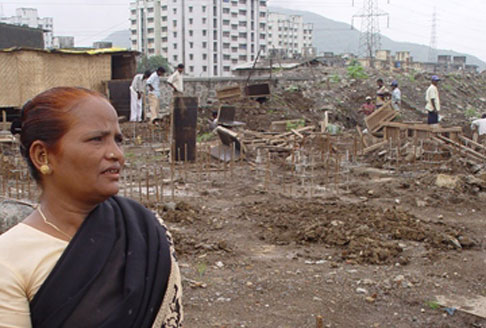In analyzing urban household transitions in Africa where
40 percent of the population lives in urban areas and the urban population is
expected to increase to 58 percent of the total population by 2050[1],
it is crucial to fully conceptualize the terms ‘urban’, ‘urbanization’, and
‘household’.
While urbanization is defined as ‘a process whereby
the proportion of a population living in urban areas increases’[2], the
meanings of ‘urban’ and ‘urbanization’ are subject to considerable debate owing
to inter-and-intra regional differences on what distinguishes an urban area
from a rural one. Most urban definitions focus on what is physically present within
a given urban area such as population or economic production, among others, but
emphasis may be placed on what flows through urban areas e.g. trade,
information, and so on. For comparison purposes, the United Nations Statistics
Division finds the size of the population as the most appropriate unit of
classification. With respect to the size of the population, smaller countries
tend to have a low cut-off point for urban areas as opposed to bigger countries.
For example, in Uganda, a settlement of 2000 inhabitants or more is classified
as urban, but in Mali, the cut-off point is 5000[3]. Hence,
it is crucial to note that when countries’ national statistics are taken into account
for international comparability, the data used may not be perfectly comparable.
Similar to the definition of urban areas, there is
no universal definition of households. The United Nations Statistics Division
offers two definitions of households where households are defined for data
collection on the basis of either: 1) Shared function: a household consists of
all persons who may pool their incomes and have a common budget to a greater or
lesser extent; they may be related or unrelated persons or a combination of persons
both related and unrelated (UN’s ‘housekeeping concept’); or 2) Shared space: a
household consists of all persons living together in a housing unit (UN’s
‘house-dwelling unit’). Problematizing the concept of household reveals that even
though majority of households consist of members related by family ties of
blood or marriage, families are generally bigger than households, and households
are historically
specific and vary from country to country or region to region. Households can
take many forms, including nuclear, extended, female-headed lone parent, nuclear-compound,
single-sex, and step-family household, among others.
Theoretical perspectives
argue that the increasing urbanisation in Africa is replacing extended households
with nuclear households. While this may be true to some extent, there is
inadequate empirical evidence to support this claim and there are reasons to
believe otherwise. For example, in the wake of HIV/AIDS pandemic, there is an
increase in the size of orphan-led households in Africa with 44% of Zambian
households having taken in orphans due to death of parents[4].
Moreover, among low-income households, there is an increase in size because of
scarcity of employment.
There is also an increasing
feminisation of household headship in Africa. This proliferation of female-headed
households is happening in the wake of increasing female labour force
participation as male employment opportunities decline owing to macroeconomic
factors. Other factors contributing to the increase in female headship include
males migrating for labour which is the primary reason for female-headed
households in South Africa. Male deserting their female counterparts and dying as
a result of HIV/AIDS or conflict are other factors. For example, in Angola decades
of conflict have led to the loss or displacement of men resulting in an
increase in female-headed households. In the case of South Africa, women’s view
of men as “superfluous” in many respects is another reason for the large
proportion of female-headed households[5].
It is crucial to note, however, that statistics on female-headed households in
Africa and elsewhere may be under-reported, because of male biases whereby
household headship and being a male is regarded as equivalent. The
decision-maker criteria for headship can also be problematic, because in practice a person who makes
the most income is often also the decision maker.
In conclusion, as the urban households evolve in
Africa, there are gender implications for policy formulations that cannot be
ignored. Appropriate policies and interventions are required to respond to
these transitions. Data collection on household composition should be improved
to satisfy the need for data on household size, transition, and characteristics
of the head of household – sex, marital status, educational level and economic
status. Moreover, direct public assistance must be offered for households
identified through means-testing as being the poorest. These households may
include some female-headed households where income level is constrained owing
to the idealization of heteronormative model and other social and economic
inequalities.
By: Afifa Faisal
[1] United Nations Department of Economic and Social Affairs (UN-DESA)
(2011) World Urbanisation Prospects
(UN-
DESA: New York)
[2] Dyson, Tim (2010) Population
and Development: The Demographic Transition (Zed: London), xv
[3] UN-Habitat (2010) State
of the World’s Cities 2010/11: Bridging the Urban Divide (UN-Habitat:
Nairobi), 13 & 41
[4] Bajaj, Monisha (2008) Schooling in the Shadow of Death: Youth
Agency and HIV/AIDS in Zambia, Journal
of
Asian and African Studies, 43
[5] Dyson, Tim (2010) Population
and Development: The Demographic Transition (Zed: London), 186


No comments:
Post a Comment